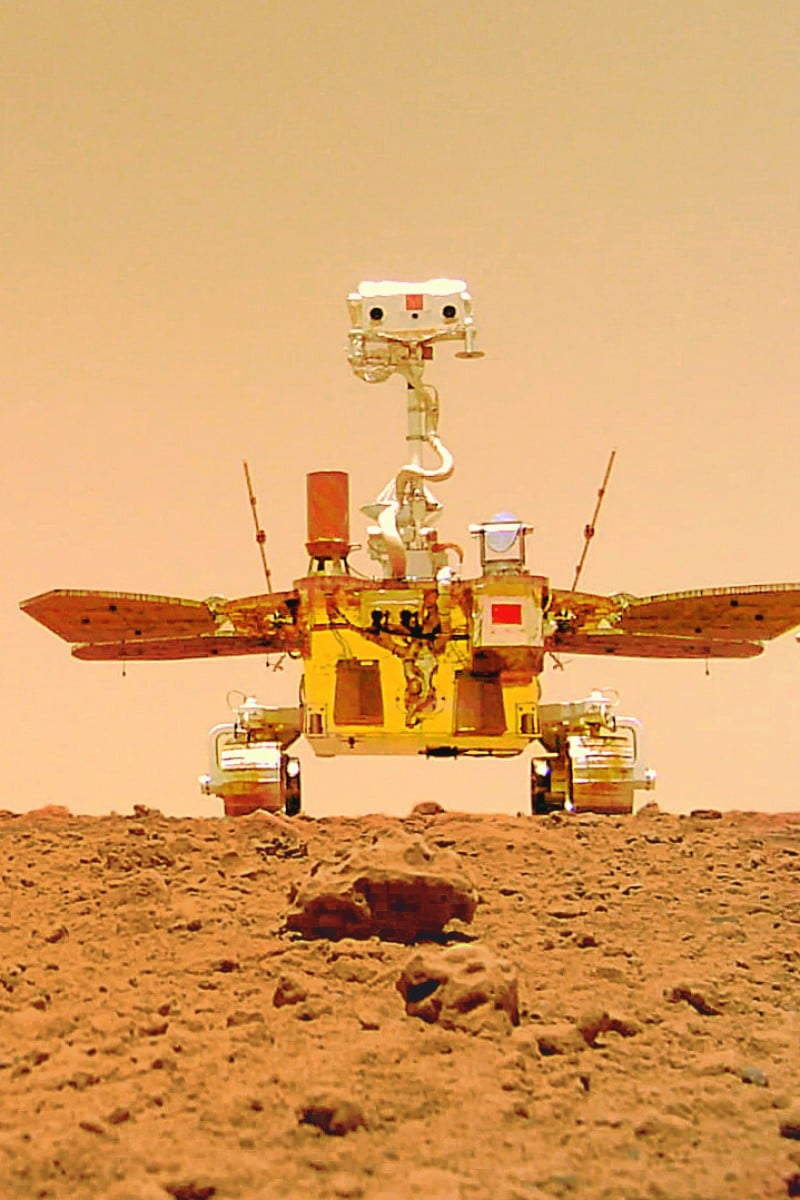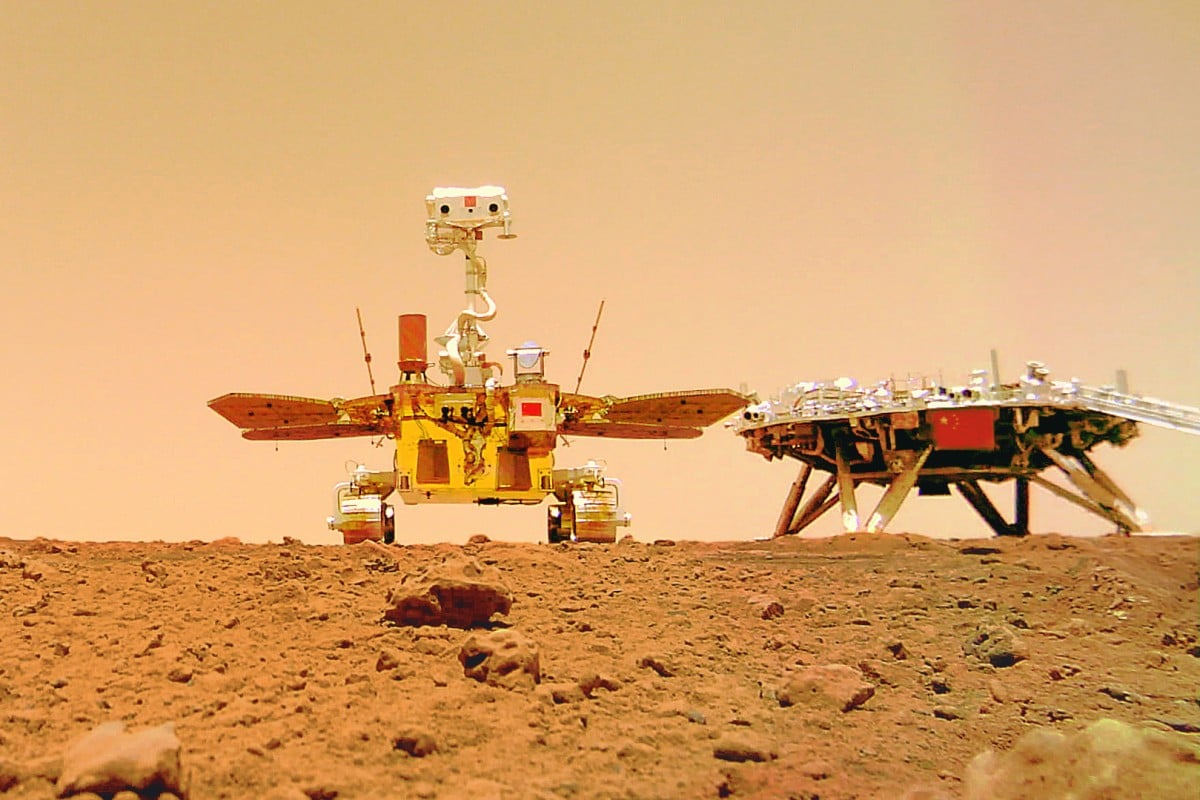
How China’s Zhurong Mars rover taught us more about the Red Planet
Special features helped the rover deal with freezing temperatures and dust storms during its mission
 The Hong Kong Polytechnic University developed a Mars camera to capture images of the Red Planet’s surroundings and monitor the status of the Zhurong Mars rover.
Photo: China National Space Administration
The Hong Kong Polytechnic University developed a Mars camera to capture images of the Red Planet’s surroundings and monitor the status of the Zhurong Mars rover.
Photo: China National Space AdministrationMars, also called the Red Planet, is one of the most familiar planets in our solar system – apart from Earth, of course! Mars has become a hot topic of conversation because of the idea of settling there. The planet is located within an area of our solar system where liquid water could exist on its surface.
However, Mars is very cold and has severe dust storms. The tough environment is challenging for humans to land on and explore. This is where a Mars rover comes in handy.
The Zhurong Mars rover is named after the fire god Zhurong, a character in Chinese myths. The rover is part of China’s Mars Mission. It landed on Mars in 2021 and explored the surface for 358 Mars days before switching to inactive mode in 2022. It remains on the planet’s surface to this day.
A rover should be able to deal with the planet’s challenging environment while exploring the land and doing scientific surveys. Rovers must maintain an even temperature and electricity source so their scientific instruments work properly in the freezing Martian climate, where temperatures can drop to -153 degrees Celsius.
For Zhurong, the secret to maintaining its temperature lay under the circular “windows” at its top. Under those windows is a chemical called N-Undecane. This chemical absorbs heat during the day and releases it at night, providing the perfect “heat pack” for the rover on freezing nights. A special aerogel ensures the cabin remains at a good temperature.
The solar-powered rover uses sunlight to make electricity. The solar panels cover its top and butterfly-like wings, but one thing blocks their full use: dust.
A special anti-dust coating on the panels helps with the dust from storms on Mars. This coating looks like a bed of pins across the panel’s surface. It reduces the surface area where dust could land, making it harder to stay on the panels. A slight flip of the panels removes the dust from the rover.
Several months after Zhurong was meant to awaken from inactive mode, its mission designer said the rover was likely affected by dust build-up. This may have hurt its ability to wake up and clean itself.
Still, Zhurong’s Mars mission exceeded its goals. The photos and data sent by Zhurong revealed what Mars looks like. Thanks to Zhurong, we are one step closer to a manned exploration on Mars. Let’s see how far we will go!
Content by
